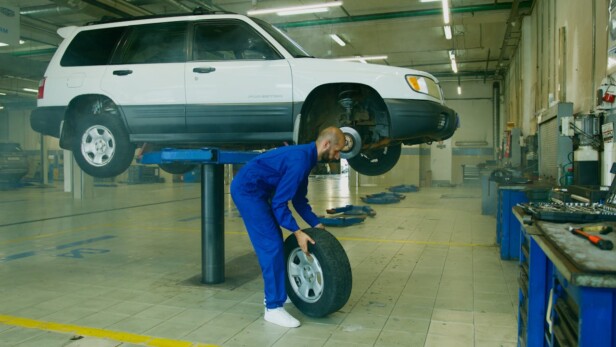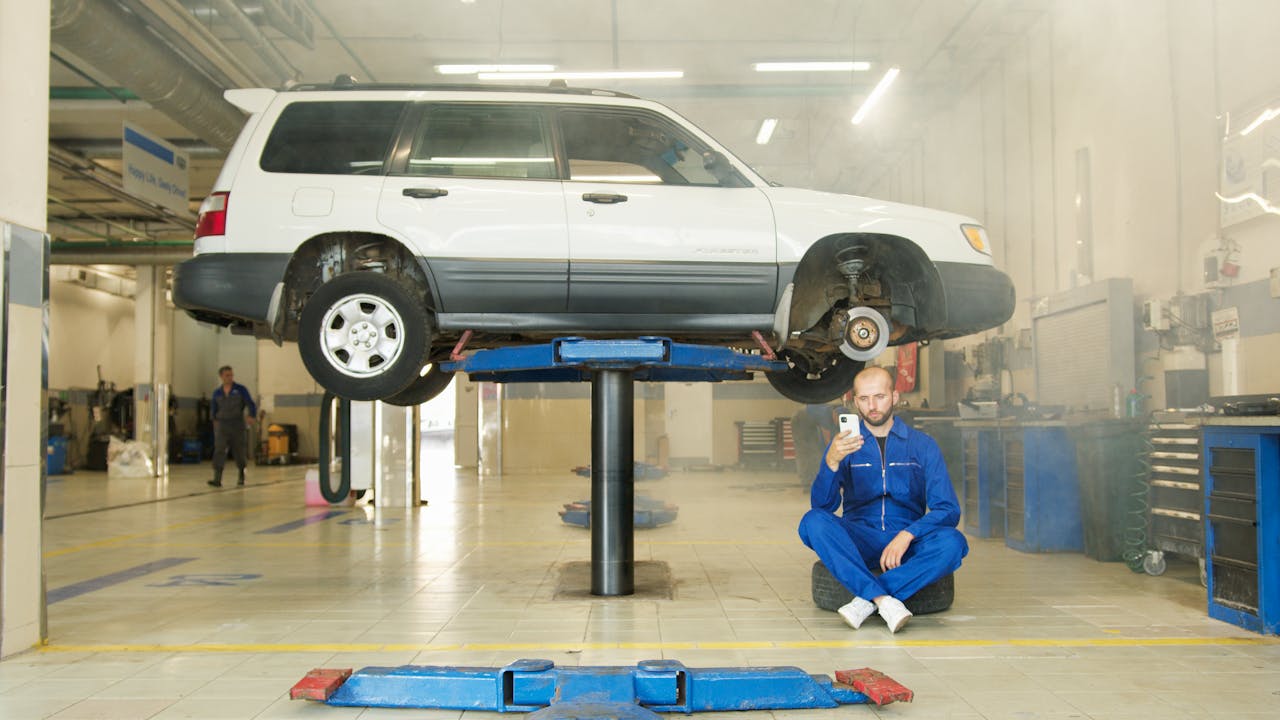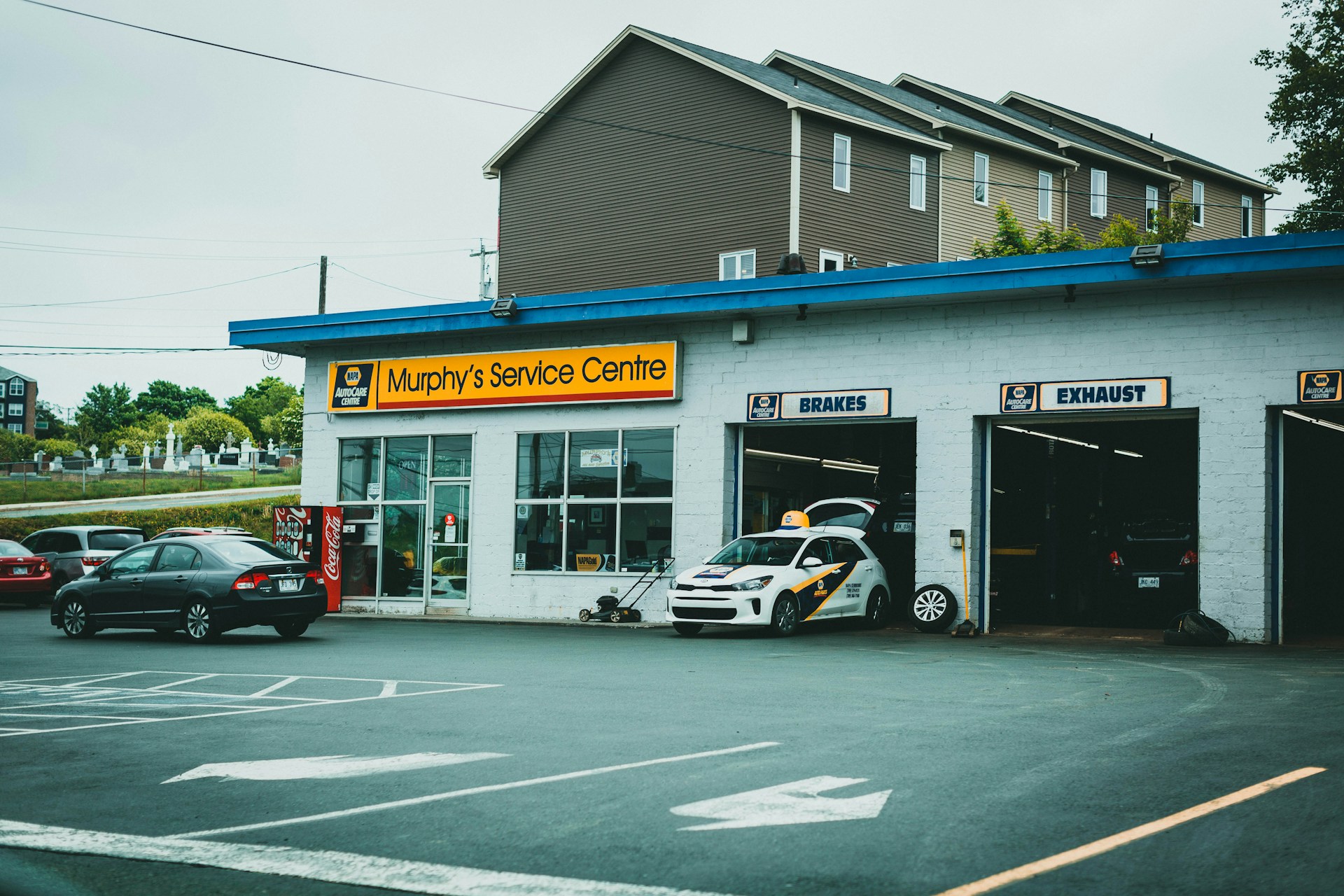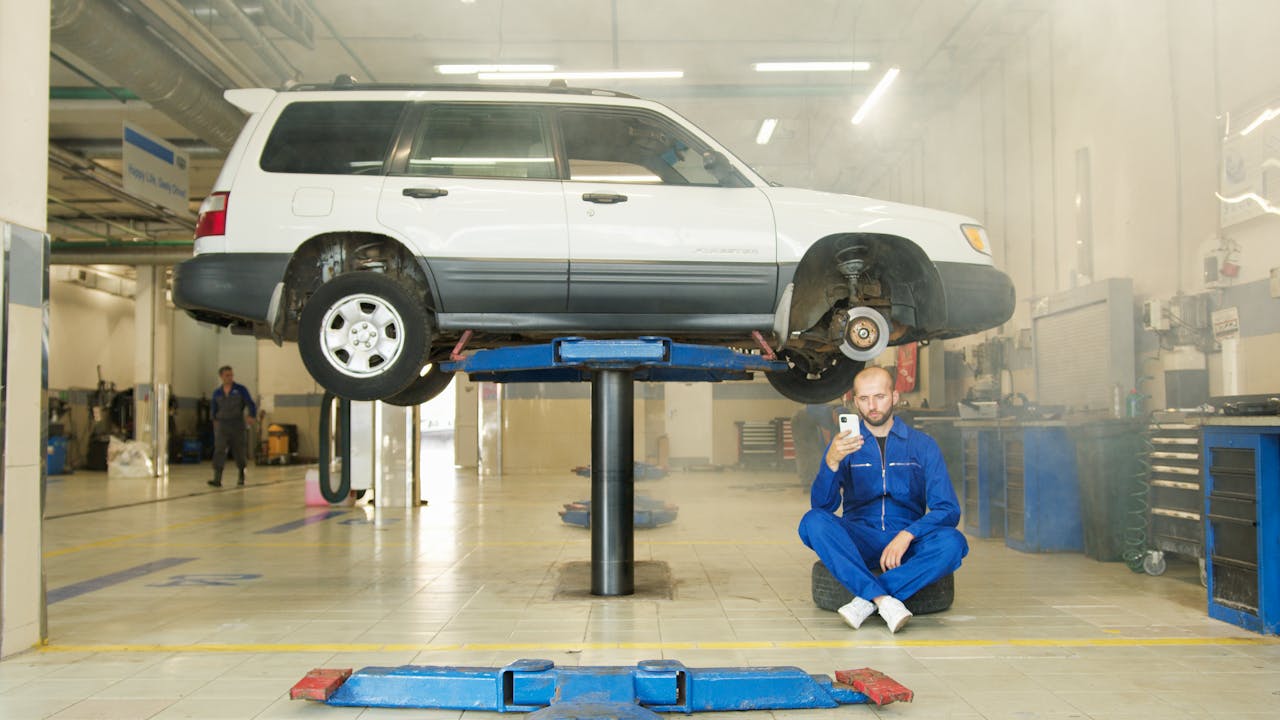Austin’s growing vehicle population creates a steady demand for professional tire services. In a market where vehicle registrations continue climbing and busy commutes put extra wear on tires, establishing a well-planned tire shop positions you to serve this expanding customer base.
Successful tire shop buildout plans in Austin address two critical elements: regulatory compliance and operational design. We coordinate local permitting requirements with functional layouts that support efficient tire services, ensuring your facility meets both city standards and customer expectations from day one.
Which Permits And Approvals Are Required For An Austin Tire Shop Buildout?
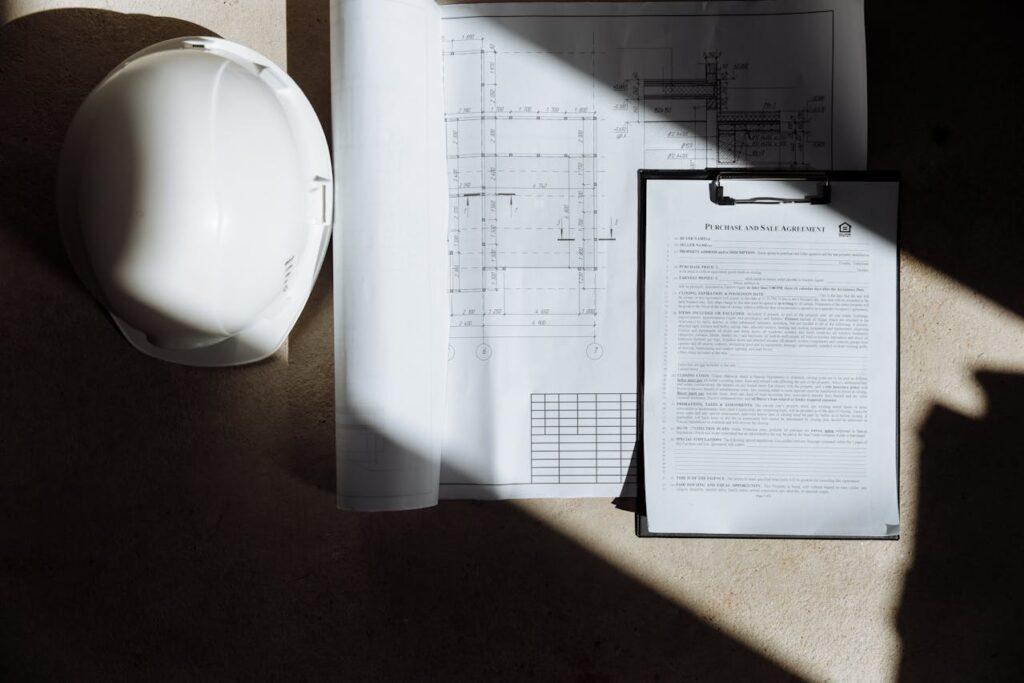
Building a tire shop in Austin requires coordination between Texas state requirements and city-specific permits. We break down the permitting process into two distinct phases: state-level business setup and Austin municipal approvals.
Texas State Business Requirements
Texas law takes a simplified approach to business licensing. The state does not require a general business license for tire shops, but several foundational steps establish your legal framework.
Start by determining your legal structure through the Texas Secretary of State. Whether you choose sole proprietorship, LLC, or corporation affects liability and tax treatment. Register your chosen business name with the Texas Secretary of State if operating under anything other than your personal name.
An Employer Identification Number (EIN) from the IRS becomes essential for tax purposes and employee hiring. Most tire shops also need a sales tax permit from the Texas Comptroller since tire sales generate taxable revenue.
Environmental compliance enters the picture if you plan to store over 500 used or scrap tires. Register with the Texas Commission on Environmental Quality (TCEQ) to meet waste management requirements. Business insurance rounds out state-level preparations. General liability, commercial property, and workers’ compensation coverage protect against operational risks, while commercial auto insurance applies if you maintain loaner vehicles.
Austin Municipal Permits
Austin’s permitting system addresses land use, construction, and operational requirements through the Austin Development Services Department. Most tire shop projects require a Site Plan to establish land use and site development on non-single family sites.
Building permits cover any construction, enlargement, or structural alterations to your facility. The Austin Build + Connect (AB+C) portal streamlines the application process for most building-related permits. Sign permits become necessary for outdoor signage, helping customers locate your business while meeting city design standards.
Fire department permits apply when storing hazardous materials above ground. Tire shops commonly handle lubricants, solvents, and other chemicals that trigger Austin Fire’s permitting requirements. Austin Water may require a Wastewater Discharge Permit if your operations generate industrial wastewater that enters the city’s collection system.
Right-of-way permits address any driveway or sidewalk work that affects public spaces. Water and wastewater tap permits establish permanent utility service connections. The city’s “Do I Need A Permit?” interactive tool helps identify specific requirements based on your property location and planned activities.
Certificate of Occupancy requirements vary by project scope and location. Some tire shop buildouts need this final approval before opening, confirming compliance with local building codes and safety standards.
How Should The Shop Layout And Equipment Be Planned?
We design tire shop layouts around three core zones: working bays for production, storage areas for inventory management, and customer spaces for service interaction. Each zone requires specific equipment placement and sufficient space to maintain efficient workflow without creating bottlenecks.
Working Bays
We plan working bays to accommodate tire changers, wheel balancers, air compressors, and alignment machines with clear vehicle circulation paths. Bays should measure at least 10 feet wide and 16 feet long, though we prefer 12 to 15 feet wide by 20 to 25 feet long for optimal equipment access. This sizing accommodates standard vehicles plus necessary tools and equipment on both sides.
Hydraulic lifts installed in-floor provide complete undercar access for tire rotations, inspections, and alignments. We position tire changers centrally when bays cluster around the equipment, but in facilities with long rows of single bays, we add multiple changers to reduce travel time between vehicles and equipment. Air compressor systems require 220-volt power sources and feed compressed air through overhead reels or underground piping to each bay.
Equipment placement follows an efficient workflow pattern. We arrange tire changers, wheel balancers, and air supply in an arc configuration so technicians can move logically from vehicle to tire machine to balancer and back to the vehicle. Each bay needs dedicated tools including impact wrenches, torque wrenches, and tire pressure gauges to prevent technicians from hunting for equipment during service.
Storage And Inventory
We use wall-mounted tire racks organized by size, starting with smaller 12- or 13-inch tires on the left progressing to 15-inch and larger sizes on the right. Fast-moving inventory stays closest to service bays while slower-moving seasonal tires occupy areas farther from daily operations. This arrangement reduces physical strain when retrieving tires for customers.
Mezzanine storage above the shop floor frees up valuable work area while accommodating 300 to 500 tires stacked in four or five tiers. This configuration typically requires about 400 square feet of floor space with ceiling heights of 12 feet or higher. We install metal tire racks consisting of angle irons, available in lengths up to 18 feet from tire supply houses.
We designate separate areas for new tire storage, used tire holding, and tire repair supplies. Wall-mounted shelving holds wheel weights, valve stems, patches, and other small inventory items. Proper organization includes clear labeling systems and inventory tracking methods to support daily operations.
Customer Areas
We design separate waiting rooms where customers and sales staff interact comfortably during service appointments. These spaces feature a check-in counter with digital menus displaying services and current promotions. Seating zones accommodate multiple customers with comfortable chairs, entertainment options like television or magazines, and climate control for year-round comfort.
The waiting area connects visually to service bays through large windows, allowing customers to observe their vehicle’s progress without interfering with technician workflow. We install clear sight lines between the check-in counter and service areas so staff can communicate easily about service status and recommendations.
Customer restrooms and basic amenities like coffee or water enhance the waiting experience. We position these areas near the main entrance for easy access while maintaining security separation from work zones and inventory storage.
Showroom And Displays
Wall-mounted tire and wheel displays help customers compare options before making purchase decisions. We arrange displays to showcase different tire types, sizes, and performance categories with clear pricing and feature information. Interactive elements like tire comparison charts or seasonal recommendation guides support sales conversations.
Display areas require adequate lighting and professional presentation to reinforce shop credibility. We position showroom displays near the waiting area and check-in counter so customers can browse while waiting for service or during initial consultations with sales staff.
Back-Office And Systems
We establish dedicated office space for workstations, internet equipment, and printers supporting daily operations. Shop management software integrates scheduling, inventory tracking, customer records, and payment processing into unified systems. These platforms often include marketing features for customer communication and review management.
Administrative areas need secure storage for customer records, financial documents, and business paperwork. We install locking file cabinets and ensure proper ventilation and lighting for staff productivity. Internet connectivity supports point-of-sale systems, inventory management, and customer communication tools.
Equipment positioning considers both workflow efficiency and customer experience. We isolate noisy equipment like air compressors from customer areas while ensuring all air-powered tools remain easily accessible to service personnel throughout the facility.
What Location And Market Factors Guide An Austin Tire Shop Buildout?
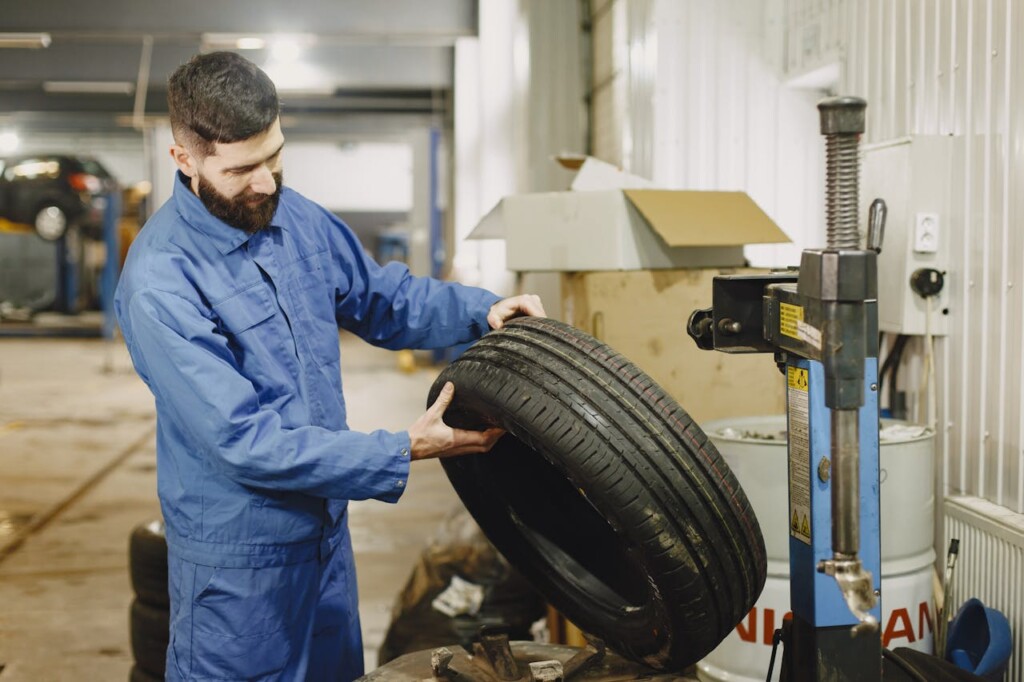
Site Selection Priorities
We select tire shop locations based on traffic accessibility and customer convenience. High-traffic sites near major roads provide consistent visibility while adequate parking accommodates the vehicles we service daily. The building must support multiple working bays for efficient operations and include space for a separate waiting room where customers interact with sales staff.
Property lease arrangements are common in Austin tire retail, offering lower initial capital requirements. We evaluate lease terms against purchasing options, which provide greater control over modifications and long-term operations. The decision impacts our buildout timeline and the extent of improvements we can implement.
Market Research Essentials
We analyze local tire demand patterns to inform our buildout decisions. Best-selling tire types in Austin guide our inventory storage requirements, while seasonal demand data helps us plan for peak periods like summer heat and winter weather preparation. Going market prices establish our competitive position and influence our service pricing strategy.
Competitor brand analysis reveals market gaps we can fill and popular add-on services that drive revenue. Recent regional activity shows Austin metro tire shops expanding services to include inspections, flat repairs, and wheel alignments. This data directly informs our bay count planning and equipment selection during buildout.
Regional Service Mix Planning
Austin’s growing automotive service sector shows consistent demand for comprehensive tire services. We review recent commercial filings in the metro area to identify service trends and customer expectations. The combination of inspections, repair services, and alignments represents the local standard for tire shop operations.
Market research drives our layout decisions, determining whether we need additional bays for alignment equipment or expanded storage for diverse tire inventory. Understanding local service preferences helps us allocate space effectively during the planning phase.
Visibility And Signage Considerations
Customer discovery relies heavily on visible signage and strategic location placement. We plan for compliant outdoor signage that meets Austin’s sign permit requirements while maximizing visibility from passing traffic. The signage strategy integrates with our site selection to ensure customers can easily locate our shop.
Effective signage placement considers both pedestrian and vehicle traffic patterns. We coordinate signage planning with our permit applications to avoid delays in opening and ensure all visibility elements support our customer acquisition goals.
Conclusion And Next Steps

The Austin Development Services Department oversees the core permitting process through their Austin Build + Connect portal. We prepare our Site Plan documentation for land use approval, submit building permits for structural work, and obtain sign permits for exterior displays.
Operations requiring hazardous materials storage trigger Austin Fire department permits, while wastewater discharge necessitates coordination with Austin Water. Our buildout timeline aligns these permits with construction phases to avoid costly delays. Floor design balances operational efficiency with regulatory compliance – positioning working bays for tire changers and alignment equipment while ensuring proper vehicle circulation. Storage solutions include wall-mounted systems and mezzanine areas that maximize inventory capacity without crowding work zones. The separate waiting room provides customer comfort and sales opportunities through strategic tire displays and digital information systems.
We register with TCEQ when storing over 500 used tires and secure comprehensive insurance coverage including general liability, commercial property, and workers’ compensation. Shop management software integrates daily operations from inventory tracking to payment processing, while market-informed promotional campaigns introduce our services to the Austin community before opening day.
Ready to start your Austin tire shop buildout project? Contact EB3 Construction today to discuss how we can coordinate your permits and construction timeline.

